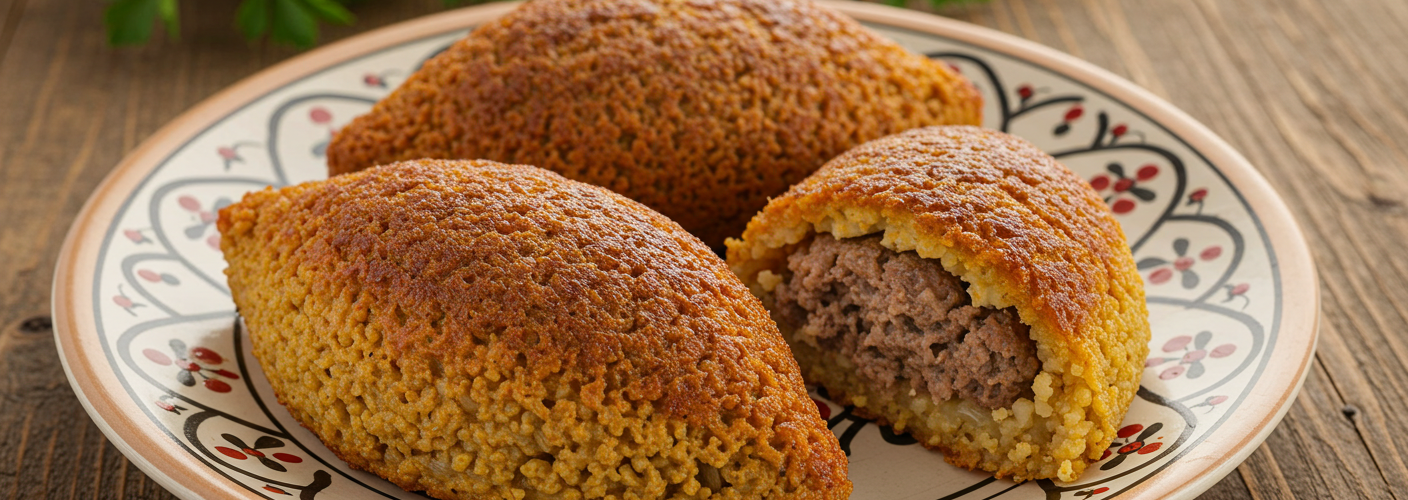Kibbeh is a dish that embodies the rich traditions and flavors of Middle Eastern cuisine. With its origins traced back to ancient times, this versatile dish has garnered admiration across the globe for its unique taste and texture. At its core, kibbeh is a succulent combination of bulgur wheat, onions, and ground beef, working together to create a beloved shell that can be filled with a variety of ingredients.
Ingredients: The Anatomy of Kibbeh
To understand the magic of kibbeh, one must delve into its primary components. Bulgur serves as the primary base, made from cracked wheat that is parboiled and dried. It offers a nutty flavor and chewy texture that forms the backbone of the dish. The use of finely chopped onions lends a layer of sweetness and aromatic richness to the mixture. Ground beef is added for protein and flavor, creating a hearty, satisfying bite.
The magic of kibbeh lies not only in its ingredients but also in its preparation. The bulgur is soaked to soften, then blended with the raw meat and onions, seasoned with spices like allspice, cinnamon, and salt, to create a well-balanced harmony of flavors.
The Art of Stuffing
While the traditional kibbeh can be served raw, it is also commonly cooked, where the stuffing process truly comes into play. The outer shell of kibbeh is crafted using the bulgur-meat mixture, shaped into ovals or discs. Within this delectable shell, you can get creative with your filling.
Common fillings include a mixture of sautéed ground meat, pine nuts, and spices, but variations abound. Some recipes incorporate vegetables, cheeses, or even lentils for a vegetarian take on this classic dish. Each filling adds its own distinct flavor, making every bite of kibbeh a delightful surprise.
Cooking Techniques: Baking, Frying, or Grilling
Kibbeh can be prepared in several ways, offering diverse textures and tastes. The most traditional method involves baking, producing a golden, crisp exterior that contrasts beautifully with the soft and savory interior. This version is often served as a main course, accompanied by a tangy yogurt sauce or a fresh salad.
Alternatively, frying kibbeh yields a crunchy shell that is irresistible to many. The pan-fried variety, often referred to as kibbeh kousa, is a popular street food enjoyed for its crispy exterior and juicy filling. Grilling is another method used, especially for larger kibbeh shaped into patties. Grilled kibbeh brings a smoky flavor that takes the dish to a whole new level.
Conclusion: A Celebration of Flavor
Kibbeh is not just a meal but a culinary experience that brings friends and families together. Whether served as a starter, main course, or party dish, it’s a delightful way to share the essence of Middle Eastern flavors and hospitality.
As you explore the world of kibbeh, don’t hesitate to experiment with different fillings and cooking techniques. Each variation tells a story of culture and tradition, allowing you to connect with a world of rich culinary heritage. Whether you’re enjoying it at a local restaurant or crafting it in your kitchen, kibbeh promises to deliver a delicious tradition filled with warmth and flavor. So gather your ingredients, invite some friends, and dive into the wonderful world of Kibbeh!




Add comment